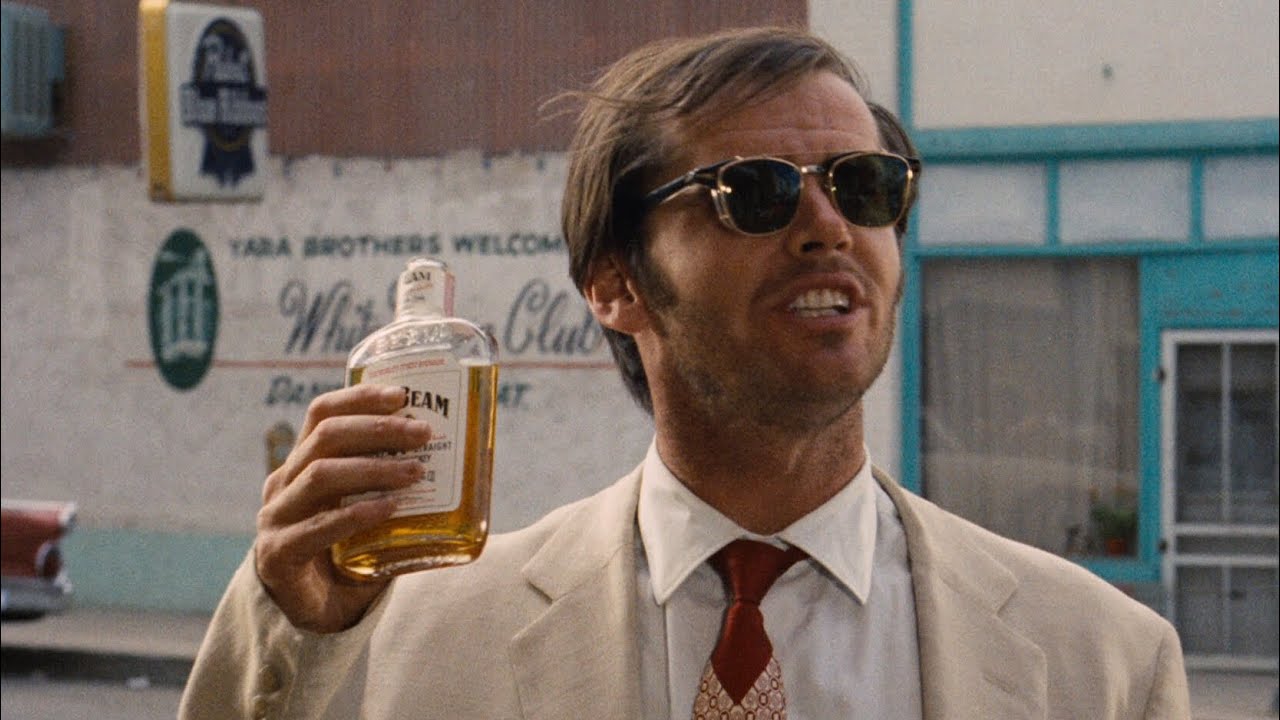
When most think about this 3 time Academy Award winner, whose 56 year acting legacy has seen him become one of the most recognisable screen talents across the planet, they tend to think of think of him in the lead role in one of four films; The Shining, Batman, One Flew Over the Cuckoo’s Nest or The Departed.
Yet, while classics in their own ways, neither one of these titles really detail the legacy he has had on the film industry. In fact, the films he forged his path in, which actually saw him take part in the behind the camera activities that he initially preferred, display seldom seen sides of the actor, that were integral to the cinematic movement of the late 1960’s and early 1970’s – the New Hollywood, or counterculture cinema movement.
Though some of these picks range from brilliant to flat out confusing, they all demonstrate how eager Nicholson was to make his mark after falling in with Bert Schneider and Bob Rafelson of BBS Productions (Easy Rider, The Last Picture Show), the staple counterculture studio that arguably heralded the New Hollywood into the mainstream. Given the opportunity to try his hand at writing as well as directing, he developed a style that would eventually become known as his signature, Oscar worthy talent.
10. Drive, He Said (1971)
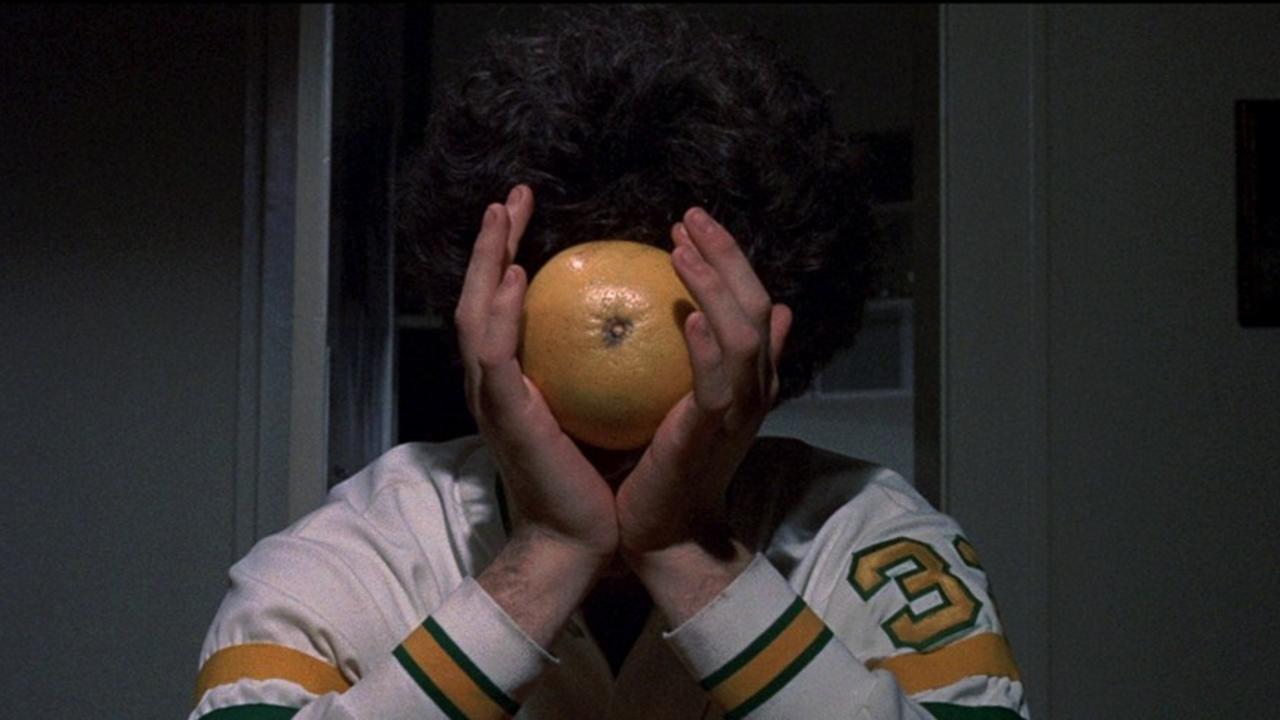
Kicking off this list is a film that Nicholson actually doesn’t appear in. After a string of successful performances in films both with his BBS crew and without, Nicholson was given the opportunity to try his hand at directing with Drive, He Said, a bold and socially conscious film that is all too often swept under the rug.
Following Hector Bloom (William Tepper), a college basketball all-star with a penchant for women, the film displays the struggles he faces between an affair with Olive (Karen Black), professor Richard’s (Robert Towne) wife, and dealing with his radicalised and increasingly violent roommate Gabriel (Michael Margotta).
Although nothing of much substance happens across the 90 minute runtime, with the characters become slightly too unlikable toward the infamous finale, Nicholson’s attention to capturing raw emotion on camera is blossoming here, later informing the expressive acting style he would become known for. All scenes, even chaotic set pieces at basketball games (all featuring a great performance by another BBS regular, Bruce Dern, as Coach Bullion), are shot with such intimacy that an audience can’t help be drawn into.
Using the character of Gabriel as a conduit for America’s Vietnam War frustrations, the film is proof that Nicholson was so in tune with the counterculture movement of the time and, admirably, was not afraid of showing it. Gabriel’s outbursts, which range from attacking army officials during an induction physical to releasing the biology lab’s vermin while stark naked, seem distractingly unrelated at first, but were braver decisions than most other counterculture film directors were willing to make at the time, and connected with audiences who saw themselves as Gabriel; fuelled with pent up anger that, just like the character, they had no idea how to let out.
Unfortunately, largely due to a vitriolic response at it’s Cannes Film Festival screenings and heavy cutting from the MPAA, Nicholson’s first film as director fell on mostly deaf ears. However, it wasn’t the first time he’d been behind the camera…
9. Head (1968)

Though the public saw them as the wholesome American cousins to The Beatles, musical T.V. supergroup The Monkees were actually a product of one of the most tumultuous periods of cultural history. The brainchild of BBS head Bob Rafelson while under Columbia Studios T.V. division Screen Gems, the drug fuelled and political conscious counterculture of late 60’s eventually made their way into the once white-bread rock group, in the form of the Nicholson co-written satire Head.
Using the band, who themselves had been adopted by conservative America, as a symbol of disestablishment, the film is a vital piece of counterculture that excellently pits The Monkees’ W.A.S.P. image against images of the Vietnam war and gross capitalism. Through the loosely strung plot, the foursome are seen traveling through surreal sequences, from leading war chants at their concerts to being stuck in vacuum cleaners and fish tanks. Nicholson even has a cameo appearance in a brilliant bit of fourth wall breaking.
Reportedly written by Nicholson, Rafelson and Schneider with the aid of The Monkees on a drug fuelled retreat, the film’s many elaborate set pieces definitely reverberate with psychedelic intrigue. Despite barely consisting of any plot, the brilliant audacity Nicholson and Co. had for including Vietnam war footage like the Execution of Nguyễn Văn Lém during scenes of their screaming teenage audience, and the rewriting of lyrics to the once wholesome song ‘Hey Hey We’re The Monkees” to include “We’re a manufacture image / With no philosophies”, more than makes up for it. This incredibly biting satire so amazingly captured how the counterculture movement felt at the time, and with Nicholson’s ingenuous, multilayered writing, made a seemingly disparate collection of comedy bits, that still somehow fit inline with the the band’s former television show, into a coherent message for change.
Nicholson also effectively exposed the unreality of the band, using scenes of them trapped in increasingly bigger structures as a metaphor for the social constructs their conservative friendly television show had stuck them in. His cameo as a movie director is just the icing on the cake, and presents the audience with a rarely seen side of the screen icon; an auteur behind the scenes, bringing his imagination to life.
8. Hells Angles On Wheels (1967)
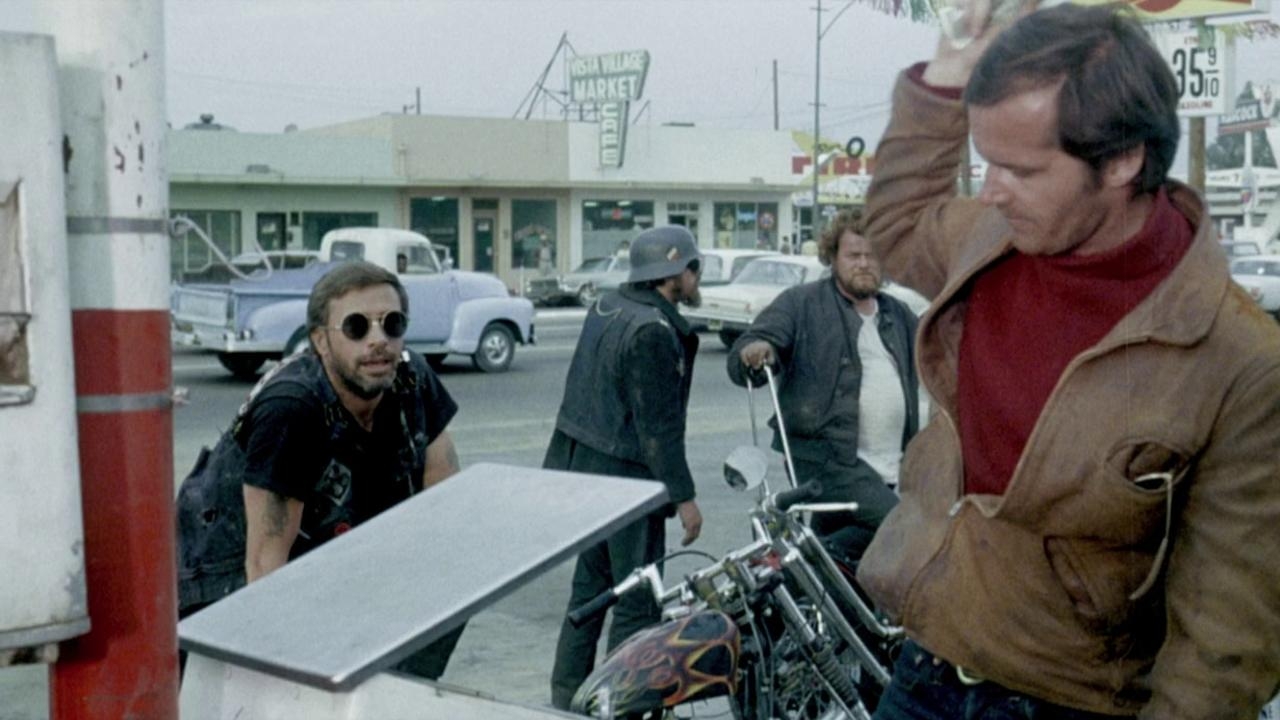
If that last pick didn’t sound gonzo enough, this next film should do the trick.
With Roger Corman’s 1966 biker flick The Wild Angels causing such a fever when it was released, the next cinematic trend to emulated for maximum box office performance was decided upon. Though Easy Rider is the prototypical example of this at the end of the decade, director Richard Rush’s dive into the world of motors saw Jack Nicholson flex his acting chops in this silly yet deliriously entertaining film.
Starring as Poet, a frustrated gas station attendant that has a run in with infamous biker gang The Hells Angels, Rush’s film charts the exciting and often violent life on the road of the outlaws, as Poet makes his way up their ranks. However, the flaring tempers of all involved eventually lead Nicholson and his new friends into deep trouble with not only the law, but rival gangs.
Before his high profile Oscar nominated film The Stunt Man, Rush was seen as a contemporary to ‘Pope Of Trash” Roger Corman, making films that sent American drive-in audiences wild with their societal knowledge and capitalised upon trends. This ‘Bikersplotation’ flick is no exception, and it’s Nicholson that really carries it.
Though Poet is initially seen as the innocent bystander, Nicholson’s performance immediately brings the audience in with a seething layer of frustration and anger bubbling under the surface in nearly every scene. For teenagers at the time, frustrated at their own lack of freedom that was so stylishly demonstrated in this film, they saw a mirror of themselves, and a spirit to aspire too.
While the film plays as more of a series of jukebox party moments rather than a character study, seeing the revered actor in this light adventure is a breath of fresh air. As the scenarios become increasingly sillier, from the Angels taking over a church to perform a marriage to orgies busted by the squarest cops imaginable, Poet’s sense of unpredictability on screen, framed within a narrative that is just as uncertain, makes for really engaging and fun viewing.
Of course, this wouldn’t be the last bike picture Nicholson would go on to grace his presence with… but more on that later.
7. The Shooting (1966)
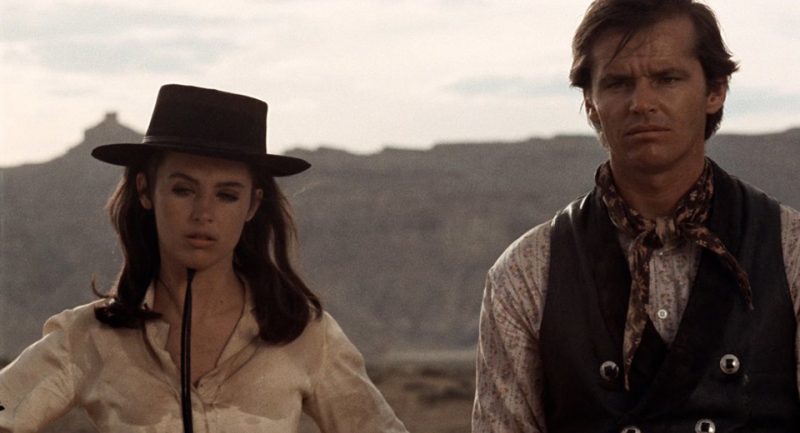
In what has been dubbed as the first ever ‘Acid Western’, this Nicolson produced and Monte Hellman (Two-Lane Blacktop) directed curiosity is a real gem that displays the actor at the cusp of genre bending cinema.
Following Warren Oates as Willett Gashade, a former bounty hunter who is forced to aid a mysterious woman (Millie Perkins) on a trip across the desert to an unknown destination, the film boasts what is possibly one of Nicholson’s coolest performances ever as Billy Spear, a gun for hire dressed in all black with a genuinely terrifying presence. As tempers and secrets slip under the blistering desert sun, Gashade soon realises he’s entered a hellish nightmare.
For a film this haunting and unique to have gone under the radar in the mid 60’s just proves how ahead of their time Hellman and Nicholson were here. Shot back to back with another Western of Hellman’s direction, Ride In The Whirlwind, Nicholson’s track record working with the Roger Corman alum meant a small yet usable budget could be utilised to create another gritty, down to earth western. The lack of exposition that Hellman fought for works so well to create the foreboding atmosphere of the film, with Nicholson’s Spear proving increasingly more violent and evil with less words he uses.
Nicholson’s keen eye for detail was only accentuated with the low budget, cleverly utilising certain locations and lighting techniques to slowly draw the audience into what becomes this almost Apocalypse Now-esque trip down the river into hell. With Corman producing in an uncredited capacity, the blend of excellent, economic writing and B-movie sense of filmmaking really make this film something special.
With it usually being cited as the first ‘Acid Western’, it could be stated that Nicholson helped spawn an entire genre that would go onto include the likes of El Topo, Dead Man and many other future classics. It goes to show just how much of a counterculture cinema legend he really is.
Added to that, his performance as Spear, the foreboding angel of death during Gashade’s descent into the desert is so haunting and well acted that the seeds for all of his classic villains since, from Jack Torrance to The Joker, are so clearly seen.
6. A Safe Place (1971)
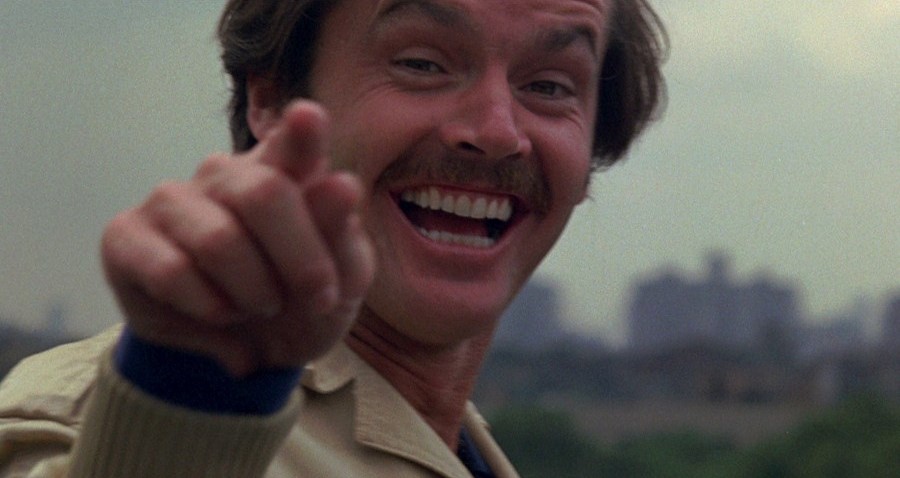
Another from the BBS gang, this early 70’s oddity almost puts Nicholson in the realm of the avant garde. Directed by Harry Jaglom, who became so close to Jack during the editing of Easy Rider that the pair promised each other that they would star in each other’s first features, the film indeed boasts an impressive cast. It’s clear that Jaglom’s finger was on the pulse of the Hollywood New Wave, which makes it a greater shame that his debut lead to more confusion than praise.
Starring Tuesday Weld in the lead role as Noah, a hippie stuck in a love triangle with Fred (Philip Procter) and Mitch (Jack Nicholson), the film’s title refers to her imagination, personified by memories of her as child watching an enigmatic magician (the one and only Orson Welles).
Widely panned upon release, sadly, Nicholson’s work in Jaglom’s unique piece never got much recognition. Though on paper, his character appears to be a fairly stock love interest, his turn as Mitch here plays very well against Procter’s Fred, slowly revealing the true intentions of this clearly layer character in contrast to Fred’s wide-eyed optimism. And, in the context of Jaglom’s stream of consciousness style, Nicholson provides a great performance, holding his own among the sometimes distracting experimental flourishes, and even against Weld in an intriguing turn, not to mention Welles’s slight over-enthusiasm.
Though clearly not what audiences were looking for at this stage in the New Hollywood movement, the fact that Nicholson was almost a certain casting choice by this point in BBS’s tenure of counterculture classics shows just how much of an icon of the time he was. And with this status, he really held his own in a variety of roles, even during times of great experimentation and flexing of the formula as displayed here.
Despite not living up to many others on this list, it must be said that the counterculture films of the time would not have been made if not for the type of experimentation Jaglom employed here, for better or worse. Putting Nicholson in a central role not only provides synergy between this and his other contemporary roles within the movement, but grounds a lot of the incomprehensible craziness enough for audiences to have a lynchpin to connect with.